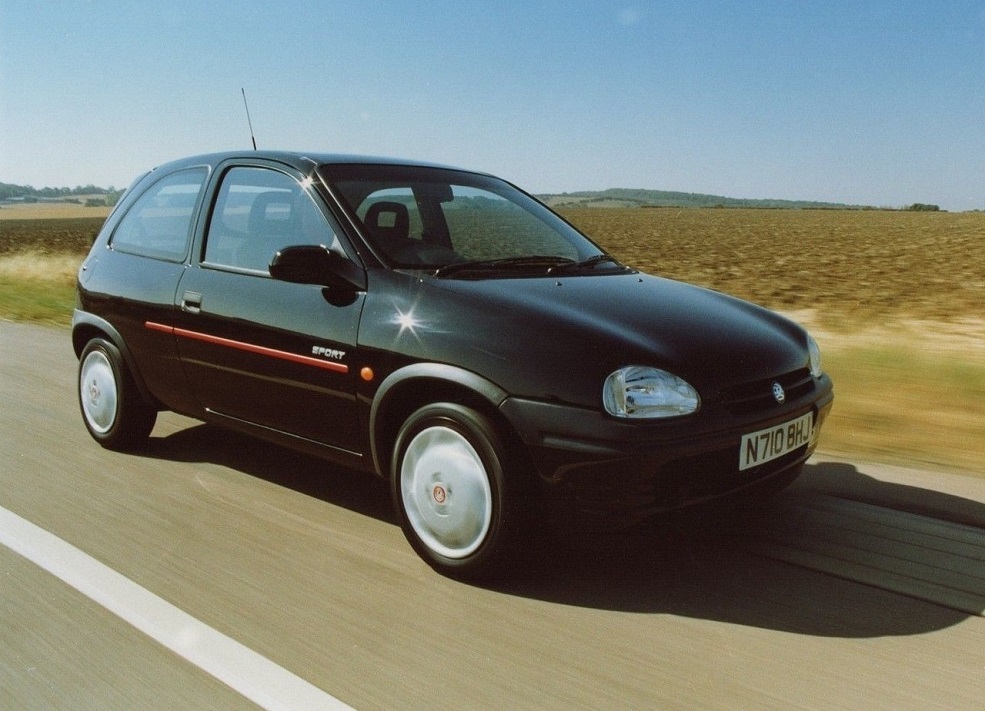In this week’s Market Trends we look at three hatches that were essentially rebadged predecessors; the Fiat Punto, Vauxhall Corsa and the Toyota Yaris…
Fiat Punto (1993-1999)
Small Fiats have been the staple of the Italian maker for a long time, and the retrospective 500’s success is a good indicator of how good they’ve been at making them. Last year, the Punto dropped out of production as the 500 and the revived larger Tipo took the reins of Fiat’s next era of compact cars. It’s a little ironic that the both these cars were defeated by the 127, Uno, then original Punto, only to come back and spell this lineage’s doom. We shouldn’t forget that 1993 car though, despite its rather dramatic disappearance from our roads. The new Punto won the 1995 European Car of the Year award and for good reason. Its high roof design developed from the Uno provided not only a spacious cabin but one that was light & airy, but thanks to Giorgetto Giugiaro exterior styling it was also a reasonably handsome thing. Crucially, it still looks distinctive today.
Great engines, independent suspension, and modern looking interior completed the package and made a properly good if not flawless car. Like other turbocharged hatchbacks of the era, particularly the Renault 5, many of the Punto GTs were modified irrecoverably and so untouched examples are rare today. Still, prices are barely being stimulated by the small number of enthusiasts interested, and GT models aren’t valued much differently to the less rampant but arguably as appealing Sporting models.
It’s actually the super-low mileage, so-called time-warp cars that are pushing values into the thousands. It could be that the most evocative models, such as the Sporting in bright yellow or mid-range cars in bright orange, might be the ones to watch for rather than simply top of the range GTs and so on.

Vauxhall Corsa B (1993-2000)
New. This was the Corsa B in the UK; new name, new shape, ready for the late ‘90s. But for all the apparent sophistication of the 1990s era and this fresh Vauxhall, the Corsa was not much more than a rebodied Nova. Already named Corsa elsewhere, its trick was especially effective in the UK and it sold with incredible verve. Vauxhall’s much marketed reputation for aerodynamic design resonated well with the new Corsa’s teardrop shape, while inside a smart interior would easily seal the deal for many.
Good engines, too, especially in the case of the 16-valve 1.4- and earlier 1.6-litre units. The sporting GSi and SRi models are so equipped and are the most valuable today, as those who may well have driven up the insurance premiums back when look to rekindle the drives of past losses. Cars with the 1.6 comfortably roam the £3000-£4000 range in good enough condition, while less appreciated 1.4 16 valvers join the rest of the range. But even basic cars are now regularly for sale above £1000, easily gaining justification for low mileage or unusual specification – for example the rare convertible models.
As 1990s nostalgia catches on, the boiled-sweet styling and bright colours of the Corsa B are pushing up prices; from the £500-£2500 range of five years ago, it’s nearly double this today, and considering the Nova market could go even further in the near future.

Toyota Yaris (1999-2005)
Toyota’s small car since the 1970s was the Starlet. Finding itself repeatedly on the peripheries of the supermini market, the decision was made to make something entirely new. The Yaris was the response. Designed at Toyota’s new studio based on the Cote D’Azur by a Greek who studied in the UK, the new car was very European. Undoubtedly a good car and very successful, but it’s the Starlet that has been enjoying the market growth on the used market.
First the Glanza S and turbocharged Glanza V, doubling in value over the last five years – it now can cost as much as £8000 for a nice one – then the rest of the range; a sub-£1000 Starlet is a rare thing today. The Yaris has a more difficult task ahead of it as used values are concerned. Primarily it’s an issue of numbers produced, but its relatively staid image also counts against it where enthusiasts are concerned. However, the SR has a growing cult following, and there is pronounced interest in the foreign-market RS Turbo and TRD-fettled models – these are increasingly on the heels of the hot Starlets. Meanwhile, the various 1.0-litre and 1.3-litre models linger at the bottom of the market, around £1000 with barely a hint of appreciation on the horizon; but in another 5-10 years?





